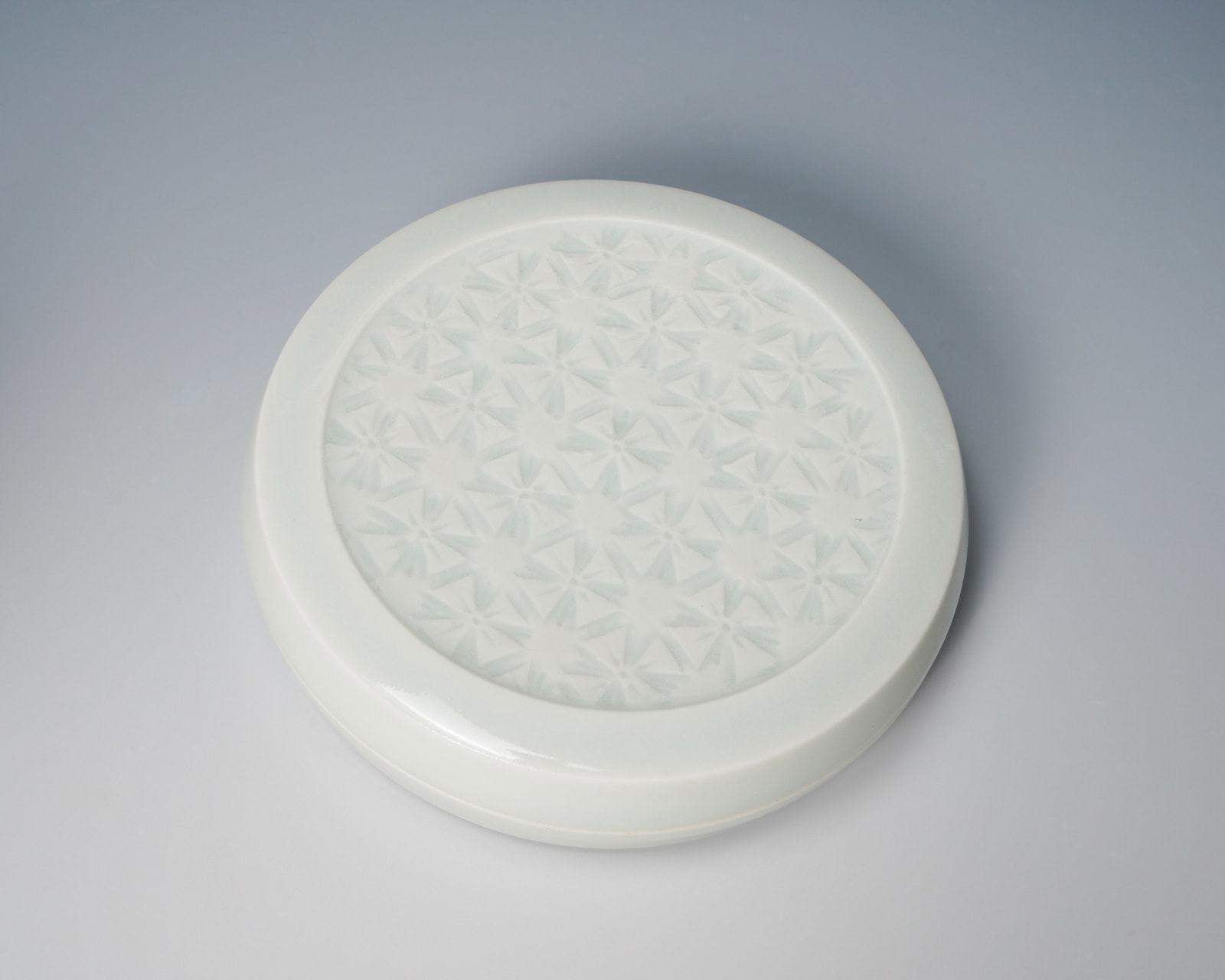KUSUBE Yaichi 楠部彌弌 1897-1984
White porcelain stamp pad holder 白磁 肉池
Porcelain
H1.2 × Dia4.3 in.
H3.0 × Dia10.9 cm
H3.0 × Dia10.9 cm
With signed wood box
$ 800.00
Further images
-
(View a larger image of thumbnail 1
)

-
(View a larger image of thumbnail 2
)

-
(View a larger image of thumbnail 3
)

-
(View a larger image of thumbnail 4
)

-
(View a larger image of thumbnail 5
)

-
(View a larger image of thumbnail 6
)

-
(View a larger image of thumbnail 7
)

-
(View a larger image of thumbnail 8
)

The Kyoto-born potter Kusube Yaichi has been raised to almost a legendary status in the world of modern & contemporary Japanese ceramics. Born as the fourth son of Sennosuke Kusube...
The Kyoto-born potter Kusube Yaichi has been raised to almost a legendary status in the world of modern & contemporary Japanese ceramics. Born as the fourth son of Sennosuke Kusube 楠部千之助, who himself studied classical painting, he entered the pottery world early as a pioneering force of developing new glazes and innovating new artistic sensibilities in the world of ceramics. Once he graduated from the Kyoto Municipal Ceramics Research Institute, Kusube immediately began making ceramics as an individual artist, exhibiting accordingly by this profession.
Due to Kusube’s international affiliations– with his pottery family originally specializing in export wares– he began exhibiting internationally early on. He propelled himself into a new and avant-garde ceramic spirit from the 1920s to 1940s. In 1924, he won several awards at the Paris World’s Fair, and then again over a decade later in the 1936 iteration. He has mastered a huge range of techniques from white porcelain works, to overglaze painting. His modern forms, as appreciated in flower vases and incense containers, water droppers, and other classical ceramics, in the later years are particularly coveted. With slender forms that carry an aerodynamic quality, his affinity for graceful forms were ahead of his time.
This stamp pad container is made of white porcelain, which he mastered in his early training years, and continued to appreciated throughout the years because of its classical Joseon dynasty affiliations. The containers were made to hold a natural sponge-like material that carries ink for seals.
He was awarded the Order of Cultural Merit, and his works are highly celebrated among collectors and connoisseurs in Japan.
Due to Kusube’s international affiliations– with his pottery family originally specializing in export wares– he began exhibiting internationally early on. He propelled himself into a new and avant-garde ceramic spirit from the 1920s to 1940s. In 1924, he won several awards at the Paris World’s Fair, and then again over a decade later in the 1936 iteration. He has mastered a huge range of techniques from white porcelain works, to overglaze painting. His modern forms, as appreciated in flower vases and incense containers, water droppers, and other classical ceramics, in the later years are particularly coveted. With slender forms that carry an aerodynamic quality, his affinity for graceful forms were ahead of his time.
This stamp pad container is made of white porcelain, which he mastered in his early training years, and continued to appreciated throughout the years because of its classical Joseon dynasty affiliations. The containers were made to hold a natural sponge-like material that carries ink for seals.
He was awarded the Order of Cultural Merit, and his works are highly celebrated among collectors and connoisseurs in Japan.







